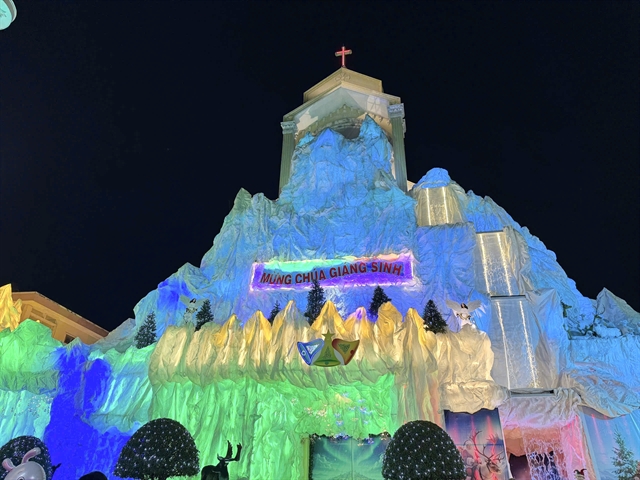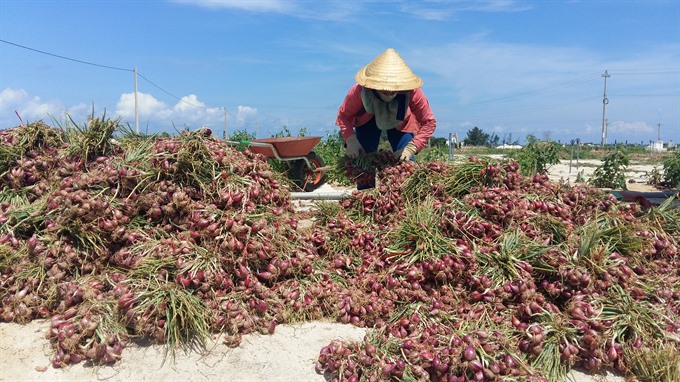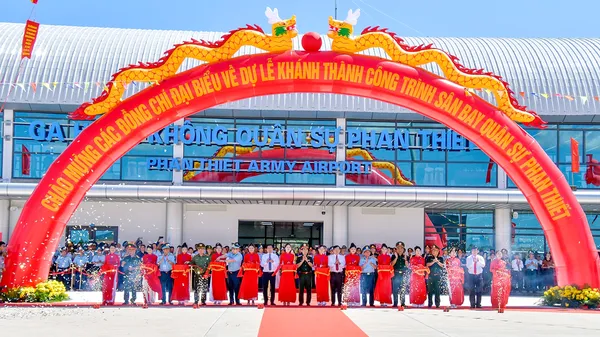 Life & Style
Life & Style

The island district of Lý Sơn, 30km off the coast of Quảng Ngãi Province, has planned a night market for tourists on the island in May.
 |
| An overview of a corner of Lý Sơn district. — VNS Photo Công Thành |
LÝ SƠN — The island district of Lý Sơn, 30km off the coast of Quảng Ngãi Province, will open a night market for tourists on the island in May.
Vice chairwoman of the district’s People’s Committee, Phạm Thị Hương told Việt Nam News that the night market will be located in front of Mường Thanh Lý Sơn Hotel in An Vĩnh Commune.
Hương said the market, which will run from 6pm until 10,30pm daily, will host 40 pavilions selling souvenirs, dried seafood and specialties of the island as well as an entertainment centre.
She said a lack of night entertainment and shopping service has hampered tourist attraction.
Last year, Lý Sơn Island and An Bình islet hosted more than 200,000 tourists.
The island has 18 hotels, guesthouses and homestays providing accommodation for 1,000 tourists at present.
The islanders of Lý Sơn offer local cuisine and garlic and onion farming experiences for tourists during a sea trip from Sa Kỳ port in summer.
 |
| Islanders harvest onions on Lý Sơn island, off the coast of Quảng Ngãi Province. — VNS Photo Công Thành |
Lý Sơn and a vast coastal area of Bình Sơn District are being considered as a site for a Global Geo-Park for approval by UNESCO.
It has been well-known as the ‘King of Garlic’ in Việt Nam with 21,000 inhabitants, most of whom make their living from farming garlic and spring onions and fishing.
The islands and a vast coastal area of Bình Sơn District may receive Global Geo-Park recognition from UNESCO.
According to archaeologists, Lý Sơn Island is a dormant volcano. The terrain of the island was created from eruptions 25 to 30 million years ago, leaving landscapes with rocks, caves, cliffs, rock arches and a lake.
 |
| Thới Lới Mountain is seen on Lý Sơn Island. — VNS Photo Công Thành |
The island has abundant relics related to the Sa Huỳnh, Champa and Đại Việt (or Great Việt) cultures that existed on the island for thousands of years.
Islanders still preserve the annual Hoàng Sa festival to pay tributes to local men who enlisted in the Hoàng Sa flotilla hundreds of years ago.
The flotilla was set up under the Nguyễn dynasty to patrol the Hoàng Sa (Paracel) and Trường Sa (Spratly) archipelagos and salvage goods from the many wrecks, catch fish and maintain a Vietnamese presence over the area.
The festival, which includes a requiem for those who had died on the sea patrol missions, a procession of four supernatural creatures and the release of lanterns, has been recognised as the National Intangible Heritage. — VNS



